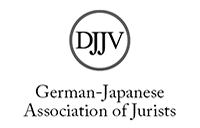Who Owns My Shares?
Large Shareholding Reporting System and Shareholder Identification in Japan
Abstract
This contribution examines the ongoing discussions on the architecture of a new shareholder identification system in Japan. It begins with a brief analysis of the current Japanese large shareholding reporting system and its limitations. The system dates to 1990, when Japan introduced a system modelled on the related legislation of the United States. Large shareholders are required to disclose changes regarding their voting rights, the so-called “5% rule”. The aim is to enhance the transparency of the shareholder structure for listed companies. Despite being inspired by the pertinent regulatory architecture established by foreign countries, the operation of the Japanese system, however, appears to have been less effective than expected.
The present discussion regarding the amendment of the Companies Act to establish a new shareholder identification system started in 2024. So far, Japan has initiated the process of introducing a system to identify shareholders by revising the Stewardship Code for Institutional Investors. The potential amendment of the Companies Act will take effect only after the revision of the Code which is expected to be revised during 2025. The “Study Group on Corporate Governance toward the Enhancement of Earning Power” published its report to reform the Act in January 2025. The Study Group emphasizes the need of companies to know their shareholders and it recommends a system based on those existing in European countries. Another study group, the “Study Group on Corporate Law”, established at the Japan Institute of Business Law, published its report about suitable amendments of the Companies Act in February 2025. It concentrates on seven points: the purpose of the system, the scope of the companies that should be targeted, the definition of “beneficial owner”, the mechanism to ensure effective transmission, the scope of the information to be provided, the scope of disclosure, and the sanctions.
The author criticizes a certain confusion in the debate caused by the concealment of the true needs of issuers. In her view, identifying the real potential users and reaching a common understanding on what would be the main purpose of the system, whether it is designed to enhance shareholder dialogue or to give additional power to listed companies that need shareholder information in cases of confrontation or takeover bids, would be the easiest and best way to select the suitable options. Without resolving this point, an amendment of the Companies Act would carry the risk of adding a superfluous system or even an unwelcome one.
(The Editors)






